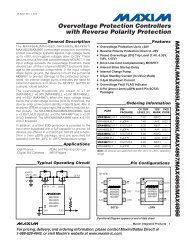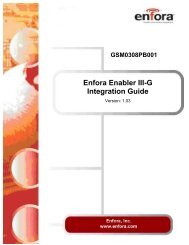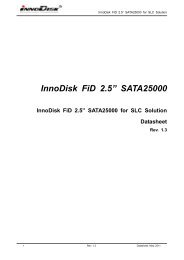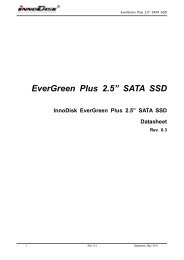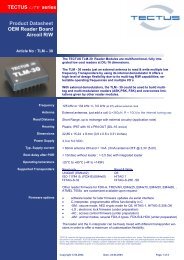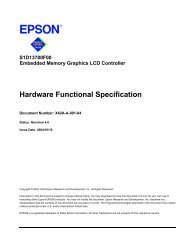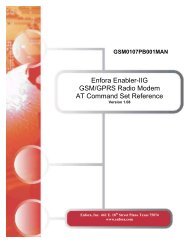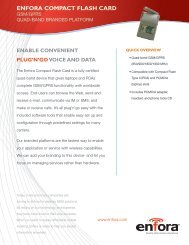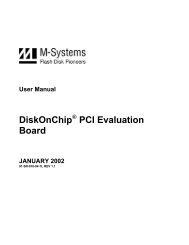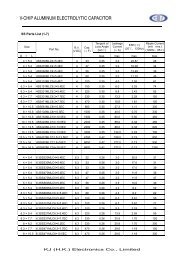AT+i Programmer's Manual - SE Spezial-Electronic AG
AT+i Programmer's Manual - SE Spezial-Electronic AG
AT+i Programmer's Manual - SE Spezial-Electronic AG
Create successful ePaper yourself
Turn your PDF publications into a flip-book with our unique Google optimized e-Paper software.
[ CA_default_policy ]<br />
commonName = supplied<br />
stateOrProvinceName = supplied<br />
countryName = supplied<br />
emailAddress = supplied<br />
organizationName = supplied<br />
organizationalUnitName = optional<br />
[ certificate_extensions ]<br />
basicConstraints = CA:false<br />
[ req ]<br />
dir = /testCA<br />
default_bits = 1024<br />
default_keyfile = $dir/private/caprivkey.pem<br />
default_md = md5<br />
prompt = no<br />
distinguished_name = root_ca_DN<br />
x509_extensions = root_ca_extensions<br />
Secure Socket Protocol Theory of Operation<br />
[ root_ca_DN ]<br />
commonName = Common Name # Server name or YOUR name<br />
stateOrProvinceName = My State<br />
countryName = US # 2 Letter Code<br />
emailAddress = myemail@mydomain.com # Your Email Address<br />
organizationName = My Organization<br />
organizationalUnitName = Organization Unit # Unit Name (ie, section)<br />
[ root_ca_extensions ]<br />
basicConstraints = CA:true<br />
Note that both dir entries under [CA_default] and [req] must be set to the path to the<br />
testCA directory created earlier. The root_ca_DN section can be changed to enter<br />
information specific to your organization.<br />
31.4.3 Creating a Self-Signed Root Certificate<br />
A certificate authority is essentially a self-signed root certificate. This root certificate is<br />
used to respond to new certificate requests to create a signed certificate. In this case,<br />
iChip is both the CA and the originator of the certificate request, so no identity<br />
verification issues exist. In a more typical situation, however, a CA can only be trusted if<br />
it performs sufficient background checks into the originator of the certificate request to<br />
verify its identity.<br />
1. Set the OPENSSL_CONF system environment variable to point to the newly created<br />
configuration file.<br />
On Linux\Unix, type the following:<br />
OPENSSL_CONF=/testCA/CAcnf.ca<br />
export OPENSSL_CONF<br />
On Windows, type the following:<br />
set OPENSSL_CONF=C:\testCA\CAcnf.ca



